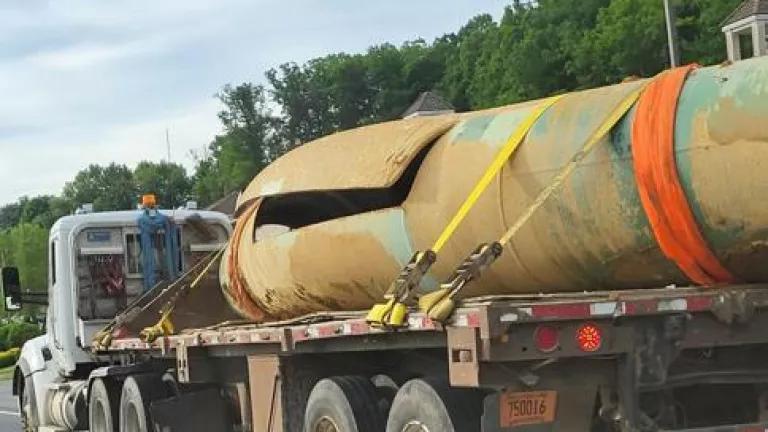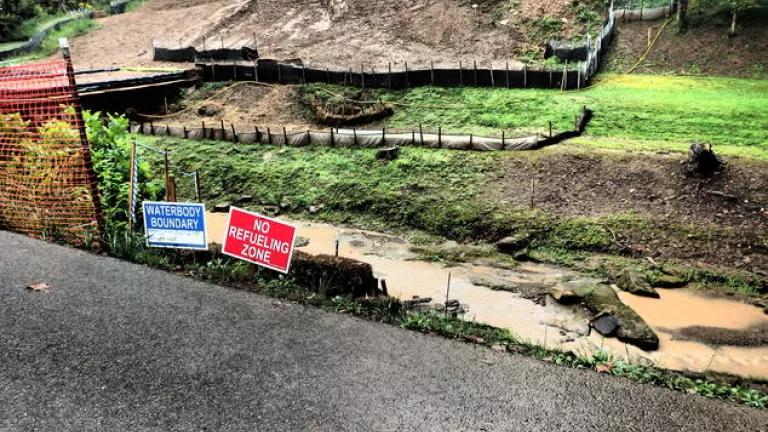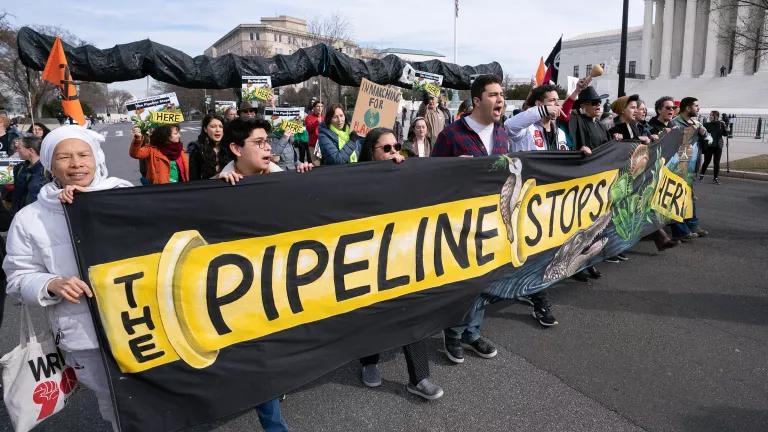Mountain Valley Ruptures, Yet Claims It's Gas Ready
On May 1, Mountain Valley suffered a major rupture during safety testing. But it still wants to start flowing gas next week.

Credit: Grace Terry
The Mountain Valley Pipeline has outstanding safety issues and is still incomplete, yet the owners are rushing to start flowing gas. In the decade that NRDC and our partners have fought this pipeline, we have regularly raised concerns about the safety of the project. Now, in the latest saga of this boondoggle, on May 1, a large section of the pipeline ruptured during a pressure test (pictures of the rupture were caught on social media).
Mountain Valley’s owners still want the Federal Energy Regulatory Commission, or FERC, to allow it to start service by May 23, incredibly claiming that the rupture demonstrates that they are taking safety seriously. Rather than accept corporate gaslighting, FERC should wait to authorize service unless or until the safety of the communities along the pipeline can be assured.
What Is Hydrostatic Testing?
Hydrostatic testing is a common safety measure used in the pipeline business. The process involves filling a new pipeline with water and then pressurizing it to simulate the dangerous high pressure of gas flows. The purpose of hydrostatic testing is to ensure that a pipeline is strong enough to safely transport gas, as well as to identify leaks or necessary repairs before gas flows into the pipeline. It’s important because pipeline leaks and ruptures can lead to explosions, serious injuries, and even fatalities.
Leaks Are Common, Ruptures Are Not
Given that pipelines are major construction projects across hundreds of miles, it’s common for hydrostatic testing to identify some weaknesses. But typically, the next step is to send a camera through the pipe to find the tiny cracks and leaks the testing identified, which may not be visible to the naked eye.
That’s not what happened with Mountain Valley. Instead, a huge section of the pipeline segment in the Virginia community of Bent Mountain burst—from pressured water. The Virginia Department of Environmental Quality said that local landowners reported that the blowout caused sediment and rushing water to flow from the pipeline into a stream and area wetland.
Mountain Valley’s Owners Are Brushing the Rupture Under the Rug—FERC Shouldn’t
In response, Mountain Valley spokeswoman Natalie Cox told the Virginia Mercury that “the disruption of this one hydro test does, in fact, demonstrate that the testing process is working as designed and intended.”
While it’s certainly better for this rupture to have happened during hydrostatic testing than after the pipeline begins transporting any explosive gas, the company has done nothing to assure the public that the pipeline is ready to operate. As an initial matter, Mountain Valley has not even finished its hydrostatic testing of the entire pipe. And Mountain Valley’s record shows that it has little interest in ensuring the safety and security of the communities affected by the pipeline. It continues to rack up more fines from the Virginia Department of Environmental Quality. It continues to ignore warnings that its pipe—which sat out in the elements for years against manufacturer recommendations—is corroded and degraded. And it maintains that, despite this rupture, the pipeline is ready for service.
It’s been reported that the Pipeline and Hazardous Materials Safety Administration is investigating the pipe rupture. Members of the Virginia General Assembly have asked FERC to deny Mountain Valley’s request to get approval for operation until all safety protocols are complete. So has the local U.S. Congressman, Morgan Griffith (R-VA), who stated: “I believe the full pipeline should be tested before there is any discussion of placing it into service.”
On May 10, the Pipeline Safety Trust, a recognized pipeline safety watchdog, sent a letter to FERC encouraging it to seek more information about the rupture, what Mountain Valley is doing to remedy the situation, and whether the pipeline “has taken care to ensure that similar weaknesses or abnormalities are addressed” to meet federal safety standards.
FERC should heed this warning and deny Mountain Valley’s in-service request while any safety investigations or procedures remain pending. The consequences of authorizing service pre-maturely are incredibly serious. Put simply, if Mountain Valley ruptures as it did during hydrostatic testing, people will die. The people of Appalachia deserve better than to greenlight a pipeline with Mountain Valley’s shoddy safety record.




